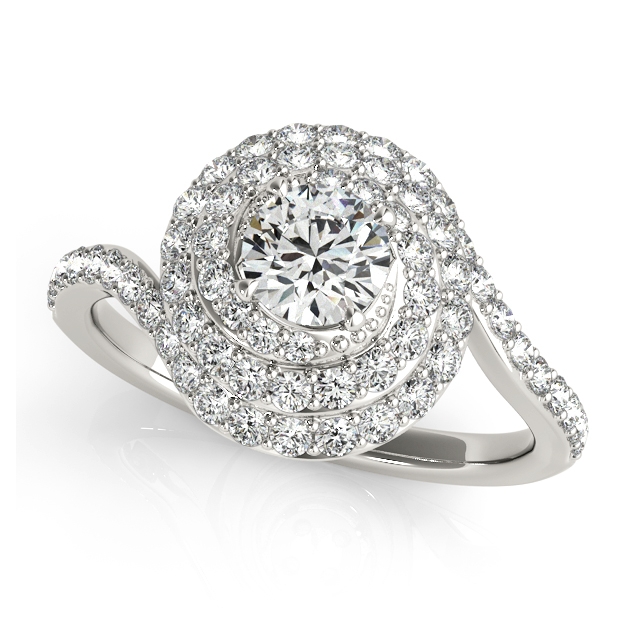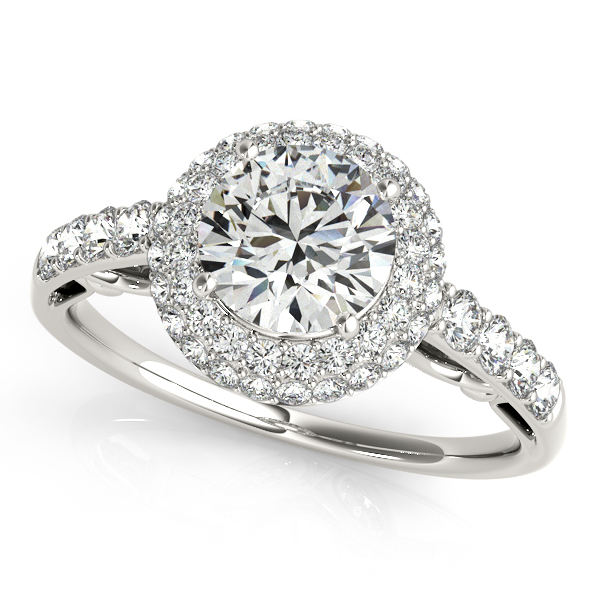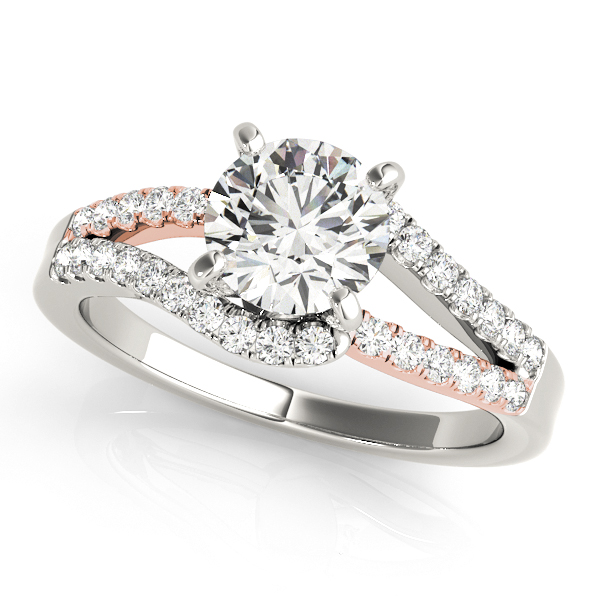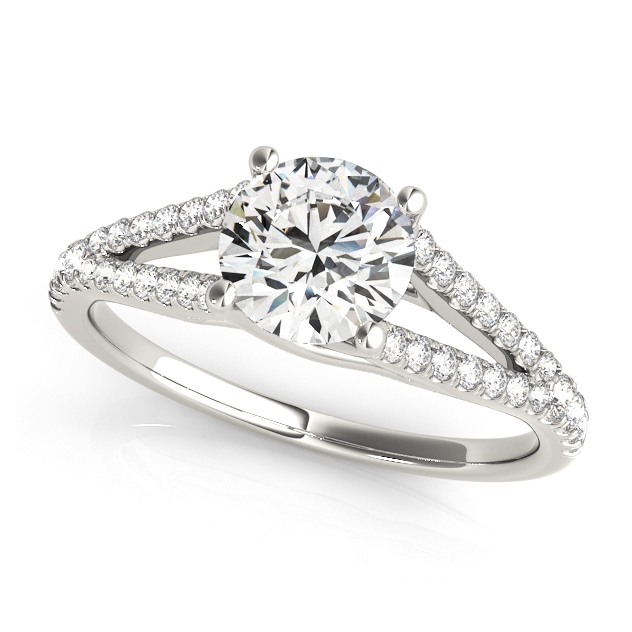- Free Shipping Over $75
- Easy 30-day returns
- Craftsmanship
- Signature Diamonds
- 360 Degrees
- Settings
Curved Shank Engagement Rings - Let's Play What If
#EncoreDT
Curved Shank Engagement Rings - Let's Play What If Beautiful Curved Shank Diamond Settings - A Modern LuxuryCurved shank diamond engagement ring settings are arguably one of the most confusing designs in our industry. What are curved shank engagement rings, anyway? Technically speaking, bypass and infinity settings contain curved shanks. Several v-shaped split shank diamond engagement ring designs are also designed with a curve. And yet, we do not refer to them as curved shank diamond settings. Split shank engagement rings, in general, frequently contain curved shanks, and yet most jewelers will place merely these designs in the “split shank” category. And these challenges sum up the foundation of the confusing nature of curved shank diamond engagement rings. In basic terms, curved shank settings are not always titled as such. This means that if you are looking for a curved shank engagement ring, you may find it in almost any diamond setting, whether or not its title actually contains the words, “curved shank”. And thus begins our game of what if. What if we add a curve (or two) to a few basic diamond engagement ring designs? The Curved Shank Engagement Rings BiasThe reality is that the notion of curved shank engagement rings is subjective. One jeweler may include it in the title and/or description of a particular diamond setting, and another one may choose not to. Does this make either jeweler in this example wrong? Due to the number of moving parts in the diamond engagement ring industry, the general rule of thumb in describing diamond settings is to focus on the foundation of the particular design. In other words, if the curved shank is the basis of a particular engagement ring design, it will likely be mentioned in the title and/or description. However, if the curved shank is an ancillary element of the design, a jeweler may choose to forego this aspect of the design in its description. For example, many curved shank halo engagement rings do not actually contain the words “curved shank” in their descriptions, as the main emphasis of these designs is on the halo, and frequently the side stone diamonds. As such, they will appear in the Halo category, and the curved shank will simply be considered as an added aesthetic benefit of the design. Curved Shank Halo Diamond Settings - Stealing the Spotlight When you think about this diamond engagement ring design, how many ways could you potentially classify it? Halo engagement ring? Double halo diamond engagement ring? Side stone halo setting? Curved shank side stone halo setting? You probably guessed it - the answer is, all of the above. For this and other reasons, jewelers must often choose a particular focus, so as to describe the foundational aspect (or aspects) of an engagement ring design, which could result in leaving behind other design elements. In this case, the main focus of this diamond setting is unquestionably the halo. It truly is the foundation of the design. However, what if we were to remove the curve in the shank? Would this design change?  It most certainly would! Remove the curved shank and what’s left is a simple, traditional, side stone halo diamond engagement ring. But notice how different this side stone halo setting is from the previous design. The curved shank adds a certain elegance, as well as contemporary character to the diamond engagement ring. And this notion brings us right back to the subjective nature of how curved shank settings, as well as engagement rings in general, are titled and described by jewelers and retailers in the industry. Since diamond engagement rings are at least 50% art, every person will have a unique perspective on what matters most about a particular setting. The Split Shank, The Curved Shank, As Well As the Curved and Split Shank What if we introduce a split shank into this equation? Simply put, this does not decrease the challenge of determining what is most important about the design. This particular diamond engagement ring features an intricate split and curved shank, with round cut side stones in a prong diamond setting. However, would you call this a curved shank engagement ring? Do you believe that this diamond setting should specifically appear in a curved shank category or subcategory? With countless opinions on this subject matter, classifying curved shank diamond engagement rings becomes a matter of opinion of what matters most and what to emphasize. And since it is not feasible to emphasize every aspect of every engagement ring design, this task becomes a subjective function of a particular person or group of people involved in the classification process. And the final what if of this issue - what if we were to remove the curve in this design? Curved Shank Diamond Engagement Rings Without the Curve Remove the curve, and this design becomes a simple split shank diamond setting. What’s more, this design could be classified as a v-shaped split shank engagement ring. However, much like the curved shank does not always make it into the title or description of a particular engagement ring design, the v-shaped element does not always make it either. This ultimately brings us to the conclusion that curved shank engagement rings are not unique in the aspect of subjective design classification, as this same aspect applies to so many other types of diamond settings and fine jewelry as a whole. As an example, many solitaire side stone diamond engagement ring settings do not contain the word “solitaire”, since many jewelers continue to gravitate toward the original meaning of solitaire - one single diamond. Not everyone agrees with the more modern aspect of solitaire side stone engagement rings, since they contain more than one diamond. Along similar lines, three stone diamond engagement rings with side stones frequently avoid the words “three stone” in the title or description. For this reason, while understanding nomenclature is important, the terminology alone will not suffice in identifying the engagement ring designs in a particular gallery, which may be of interest to a particular buyer. In most cases, you may just need to see them all! |












